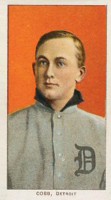How to Spot Counterfeit Baseball Cards – Part II Card Stock
Counterfeit baseball cards have existed almost as long as the hobby itself and the surge in scanners, high-end printers and the Internet have led to a tremendous amount of forged cards hitting the market. Smart collectors need to arm themselves with as many tools as possible to protect themselves when it comes time to buy and sell baseball cards. The best tool of all is knowledge. In Part I of this series, the focus was on fonts. This article will be devoted to card stock and learning what to look for to avoid fake baseball cards.
The use of high-tech scanners and digital cameras mean that crooks can make a picture perfect image, but just like those that try and counterfeit currency – it is the paper that gets them caught. Baseball cards are no different. Each era and company has a unique color, thickness, and matte that many scam artists don’t take the time to get right. In many cases, the error is obvious, but some fakes are near perfect and require more advanced tools. Below are some basic characteristics to examine to better protect yourself.
Thickness – If you are collector or T206 or other tobacco issues and have handled them out of a graded card slab, then you may have marveled out how thin the stock is. Likewise, Goudey collectors instantly know the heft and thickness of the popular 30s era cards. It is incredibly important that you learn what the card stock should look and feel like and this is much easier if you are focused on a particular era. When buying outside your comfort zone, it may take some other techniques to feel comfortable with a purchase that seems to0 good to be true. Many tobacco re-issues or fakes are printed on thick stock and are instantly detectable as fakes. This is harder if they are also in a forged slab, but, again, other things will help verify authenticity.
Opacity – Just as many card stocks are different colors and thicknesses, they are also different in the way they allow light to penetrate. A strong lamp and some testing will help you determine what a card should look like when lit up from behind. It is easy to find fakes for comparative testing and the difference, again, is usually obvious.
Optical brighteners – From around 1950 onward companies began introducing optical brighteners into all manner of paper goods, including baseball cards. A small hand held black light is a wonderful tool to help detect counterfeit cards. Using a black light, familiarize yourself with the almost non-existent glow of vintage cards and then compare them to known fakes. The modern forgery will glow due to the addition of these optical brighteners. Incidentally, this is also a common test used to validate vintage autographs – especially of the early Hall of Famers. Once you are familiar with the signature look of what you collect, a black light will easily tell you if a card is valid.
Color and texture – Handling cards is the best way to gain knowledge and seeing as many real examples as possible of all eras and styles will help you feel confident in spotting fake baseball cards. What cards series have gray stock? A rough texture? Are smooth and white? Glossy finish or matte? Again, most crooks are too lazy to get all the details right or don’t bother to study a real card to understand the best way to fake it. Thankfully, this is one more way to spot a counterfeit baseball card.
Keep collecting and not just cards! Collect the knowledge necessary to spot a good deal and run away from a rip-off. Until next time, sell baseball cards you hate so you can buy the ones you love!










